The major index ETFs ended the day higher, but gains were mixed with some pockets of weakness in the market. Small-caps led the way as the Russell 2000 ETF (IWM) gained almost 1%. The Dow Industrials SPDR (DIA), however, only gained .01% and the S&P 500 ETF (SPY) was up a mere .24%. All nine sectors were up, but the four offensive sectors barely gained on the day. The Consumer Discretionary SPDR (XLY), the Technology SPDR (XLK), the Industrials SPDR (XLI) and the Finance SPDR (XLF) gained less than .20%. Homebuilders and regional banks were weak. The Home Construction iShares (ITB) fell over 3% and is now testing neckline support of a head-and-shoulders pattern. After hitting a new high on Wednesday, the Regional Bank SPDR (KRE) fell .61% on Thursday. SPY and IWM remain in uptrends as short-term support levels hold, but these two are looking more and more vulnerable. Amazon is trading lower after its earnings release and may weigh on QQQ, which failed in the 75 area again on Thursday.


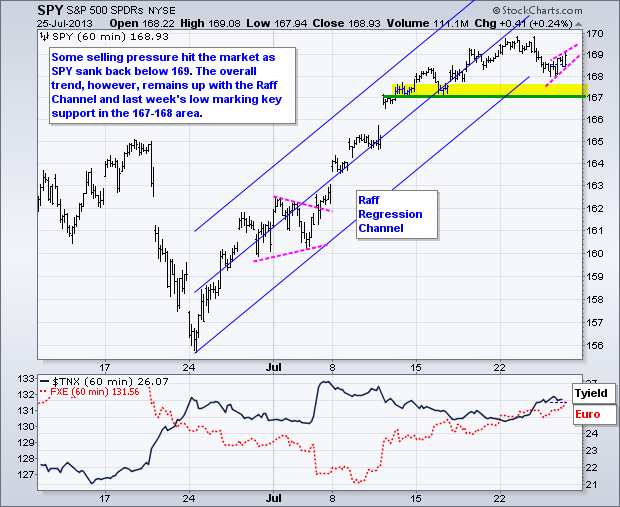
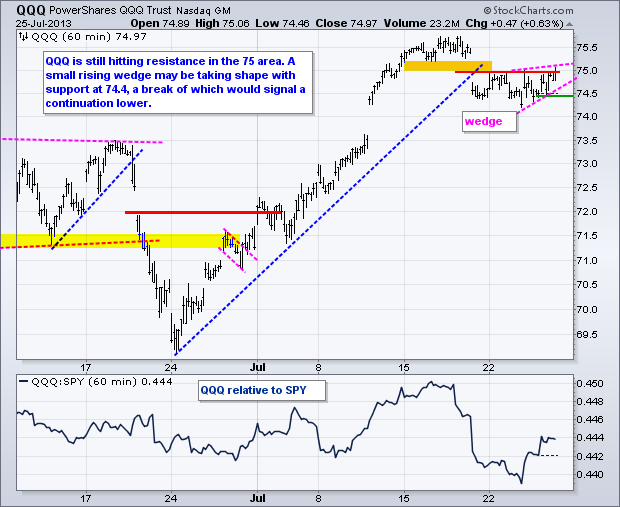
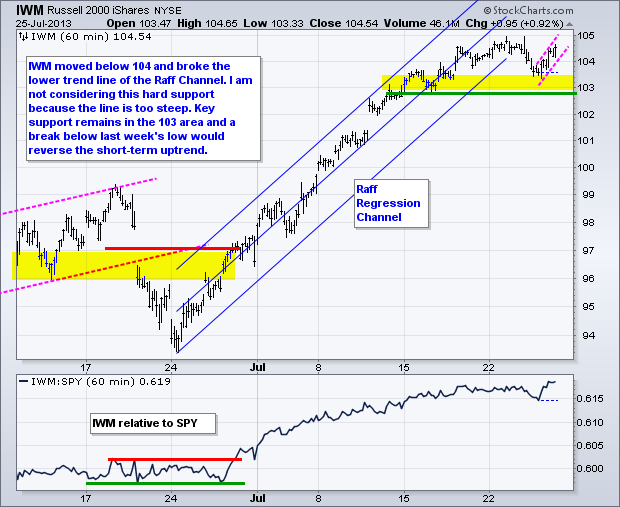
**************************************************************************
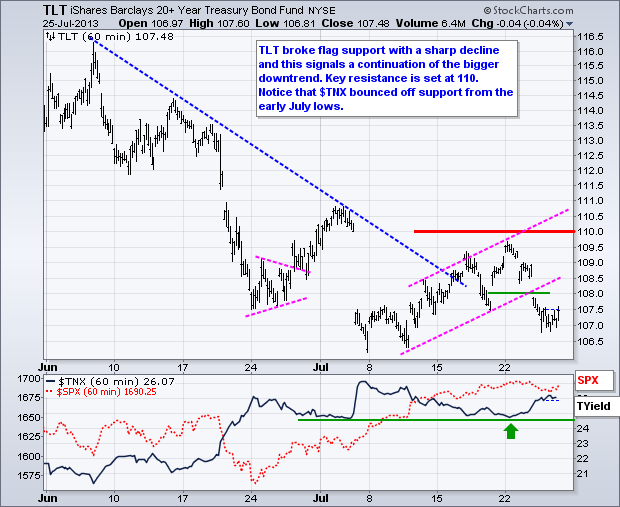
**************************************************************************
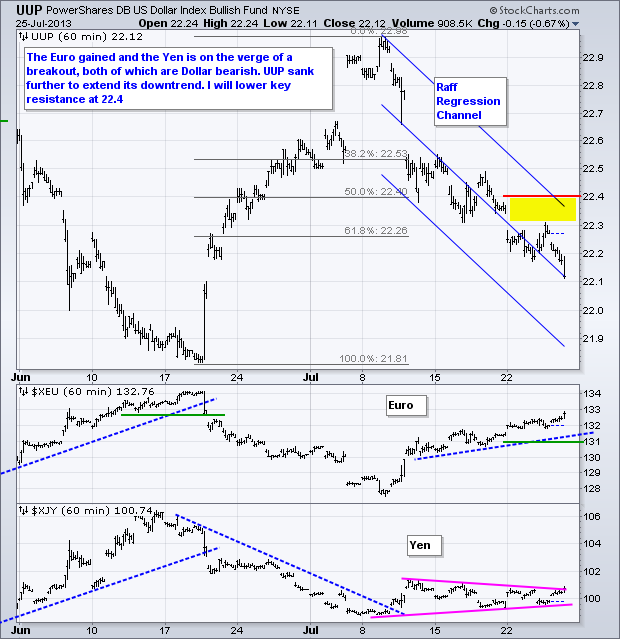
**************************************************************************
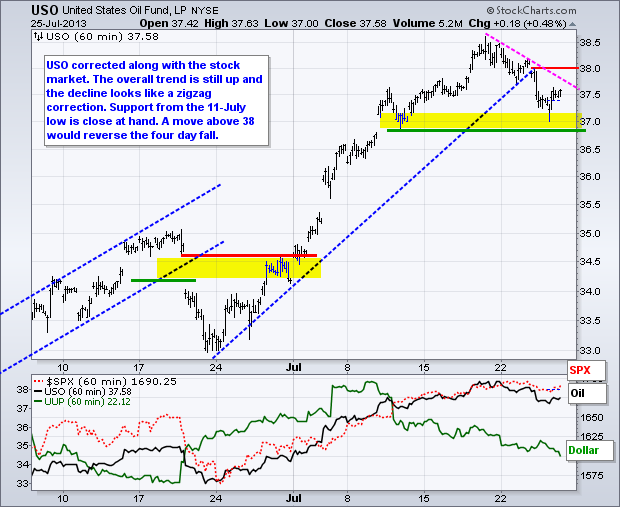
**************************************************************************
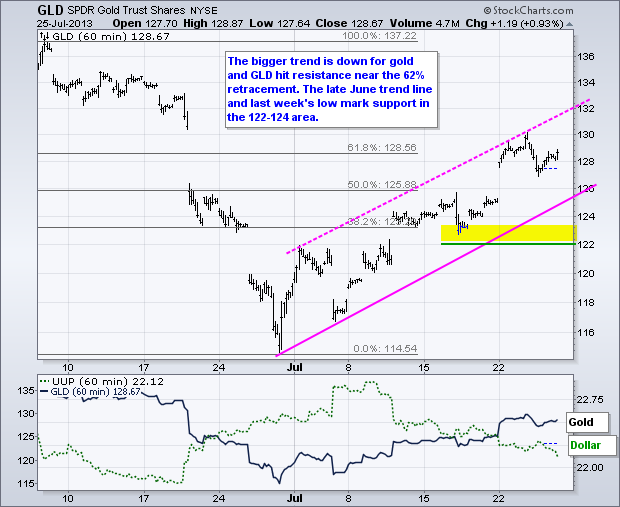
**************************************************************************
Key Reports and Events (all times Eastern):
Fri - Jul 26 - 09:55 - Michigan Sentiment - Final
Charts of Interest: Tuesday and Thursday
This commentary and charts-of-interest are designed to stimulate thinking. This analysis is
not a recommendation to buy, sell, hold or sell short any security (stock ETF or otherwise).
We all need to think for ourselves when it comes to trading our own accounts. First, it is
the only way to really learn. Second, we are the only ones responsible for our decisions.
Think of these charts as food for further analysis. Before making a trade, it is important
to have a plan. Plan the trade and trade the plan. Among other things, this includes setting
a trigger level, a target area and a stop-loss level. It is also important to plan for three
possible price movements: advance, decline or sideways. Have a plan for all three scenarios
BEFORE making the trade. Consider possible holding times. And finally, look at overall market
conditions and sector/industry performance.

About the author:
Arthur Hill, CMT, is the Chief Technical Strategist at TrendInvestorPro.com. Focusing predominantly on US equities and ETFs, his systematic approach of identifying trend, finding signals within the trend, and setting key price levels has made him an esteemed market technician. Arthur has written articles for numerous financial publications including Barrons and Stocks & Commodities Magazine. In addition to his Chartered Market Technician (CMT) designation, he holds an MBA from the Cass Business School at City University in London.
Learn More





